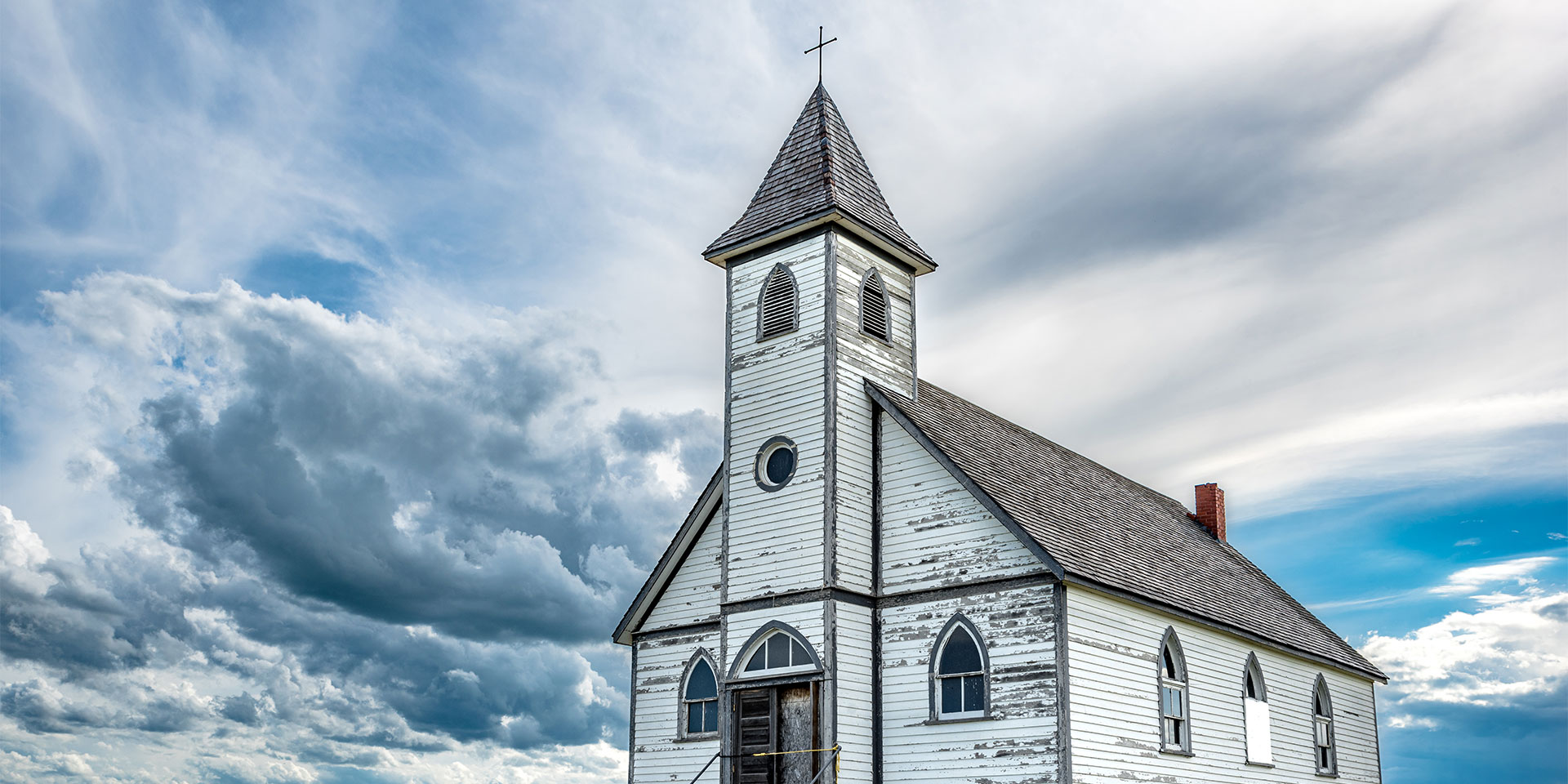Trying to describe a dying church like the one he was called to serve, Pastor Chris Lewis uses the image of a car “turned over, in a ditch, covered by weeds and beer cans, with a rusted out engine, and a couple of bodies in the trunk.”
When he was asked to be a pastor at a church in a small town in the foothills of the San Gabriel Mountains, Chris Lewis accepted with the conviction that all the church needed was a skilled leader to help it correct its course.
For at least 10 years, the church had not held a baptism or witnessed a single conversion, and very soon Lewis would learn of the old problems within the community, with scandalous unaddressed sins, and the self-centred attitude of a religious community that had forgotten its mission.
He was tempted to quit and leave behind a church that went down a spiral of seemingly irreversible decline, but he chose to stay and find a way to bring it back to life and make it relevant to the people.
The stages of a church’s decline
While the growth of a church can be rapid, its decline is much slower, often imperceptible and, in any case, difficult to recognise and come to terms with. To reverse negative trends, church members and leaders should recognise the warning signs, writes Thom Rainer, who describes six stages a church goes through on its “death march.”
The first stage is denial, the stage in which the church is declining in numbers and its impact on the community becomes negligible yet no one seems concerned at all. All the church’s worship services and programs go on as if nothing has changed.
The second stage is recalibration, in which the dysfunctional aspects become more and more visible, and the church members begin to sense that something is wrong. They can try to fix it in two ways. They can either do more of what has already proven its inefficiency or look for quick solutions. The church is willing to make adjustments, but not far-reaching changes.
The third stage is anger, when it becomes obvious that the solutions previously applied have not worked. Disappointment and irritation increase, and the church leaders and members look for a scapegoat.
The fourth stage is one of exodus. The church has already lost people, but now the number of those leaving is even higher, and the attendance of those who have not officially left yet is irregular.
In the fifth stage, that of desperation, the remaining members declare themselves more open to change, but they are speaking out of despair rather than conviction.
In the sixth and final stage, the church dies, becoming part of a sad statistic, concludes Rainer, noting that while in the past it took a church about 30 years to go from denial to death, today, the process is much shorter, unfolding within a decade or even faster.
Clear signs of a dying church
In the form of questions, Pastor Shane Idleman offers some criteria for evaluating the health of a church and of its members:
- Is prayer a priority? Or is the church too busy to pray?
- Is the church known for either sentimentalism or formalism? (Both extremes are indicators that the church is dying, says Idleman.)
- Is sin excused and the issue of holiness downplayed in an attempt to make believers feel comfortable?
- Does the church pursue love, forgiveness and unity? Or are they just preaching about these concepts?
There are eight clear warning signs of a dying church. If a church has at least half of them, it could be heading towards closure much sooner than anyone in the church would imagine, says Thom Rainer. They are the following:
- If there has been a progressive decline in numbers for four years (or more);
- If the focus is on the “good times” of the past rather than the future;
- If the majority of the members are elderly;
- If the budget is focused solely on internal needs;
- If the members focus on fulfilling their own needs instead of reaching people with the gospel;
- If they show resistance to any type of change;
- If they hold on to those things God wants us to let go of, and
- If the church and the community of which it is a part are not alike (ethnically, socially, or economically) and probably know nothing about one another, then the church is in dire need of revitalisation.
From a dying church to the miracle of resurrection
The best period of church growth happened in cultural environments that were hostile to Christianity, Rainer observes, concluding that it is not external factors that hinder growth, but “our own lack of commitment, selflessness, and evangelistic urgency.” Faced with the reality of thousands of churches closing each year, Christian leaders have only two options: initiate change or watch their church die.
There is no silver bullet that will miraculously transform a dying church into a thriving one, and each church probably has its own pace and strategies for revitalisation. However, a key element in this process is rediscovering the purpose and vision of the church, points out the president of LifeWay Research, emphasising the fact that we must cease seeing the church as just a place of comfort and stability in a world that experiences profound and rapid changes.
“Most churches would double in size if they simply became friendly,” says Pastor Brian Moss, who currently pastors a church of hundreds of members. It’s the same church that had only 30 people attend service years ago when he was called to minister. As simple as this remedy seems, most churches still don’t look like a place people would want to come back to, notes Moss, insisting that those who love God also love the people He loves.
Thriving churches are those that understand their priority is to make disciples and build strategies to accomplish this mission, points out Moss, noting that there is hope for any dying church (whether it’s struggling with a declining number of members or with weakened missionary zeal), if it manages to rekindle the members’ passion for the Gospel.
Churches that show all the signs of imminent death yet still manage to recover are rare, but what they all have in common is the willingness to make radical changes, says Thom Rainer. It takes a significant group in the church (be it in size or influence) to recognise the state it is in and accept that the members are responsible for this state of affairs.
Moreover, this group must learn to rely only on God’s plans and to love in a practical and authentic way that breaks down the barriers between them and those “outside our church”—by loving the unlovable and sacrificing time, money, and energy to serve their needs.
When asked to provide solutions for churches that focus almost exclusively on their own needs and preferences, Pastor Joe McKeever advises leaders not to be discouraged by the attitude of parishioners, but to focus on God in any way they can—by studying the Bible individually, spending time in prayer, and remaining open to the guidance of His Spirit.
Once the vehicle is set in motion, some will want to get on board, and McKeever emphasises that the leader should not wait for the entire congregation to move, but rather team up with those open to change, and resist the temptation to criticise those who remain passive.
Serious, consistent, and fervent prayer is not just one method among others to revive the church, but the key to changing the church. It may be necessary to seek help outside the church (perhaps from a successful Christian leader, used in special ways by God), but at the same time, it is essential to wait on God, to see how He answers prayers for the reawakening of the church and to allow the Holy Spirit to be the main advisor in this process of revival.
When worship has a transformative role
No matter how good a worship service is, there is always room for improvement, Pastor Joseph Kidder argues, following years of observation and discussion with leaders, pastors and believers who lead worship moments in their churches.
The service must be organised in a way that allows the focus on God at every moment of the worship (by eliminating from the program everything that does not serve this purpose, placing the announcements or greeting messages outside the worship program, combining testimonies with prayer, and so on.)
Educating the church about prayer, making the service a positive experience, and determining its appropriate length are aspects that must be considered to improve church activity.
One of the most important aspects of worship, however, is related to teaching people to apply the Scriptures outside the walls of the church, in their daily lives, says Kidder, explaining that the Bible is not just theology or eschatology but also has a practical nature.
Christians need to know how to live their faith at work, according to which principles to raise their children, how to resolve marital tensions and conflicts, and how to spread the Gospel in ordinary contexts of their lives. “Don’t give destinations without giving directions!”—this is a great way to turn worship into a transformative meeting, because people need to know not only where they need to go, but how they can get there.
When they are taught how to become more patient, how to apply the most effective methods of evangelism, and how to keep their joy amid uncertainty, those who stop either for a short or for a longer time in the church pews leave the service armed with a plan of action, instead of the frustration of not knowing how to achieve the ideals that were preached about.
Ultimately, worship is essential to the health of the church, and the revival of worship is closely related to the growth and revival of the church, points out Pastor James Emery White. It is a very natural correlation because worship is at the centre of the Christian life. It means an encounter with God, transformation in His image, and refinement of thought so that it can be harmonised with His thought and plan. His desire and gift for every member of the church is life to the full.
Carmen Lăiu is an editor at Signs of the Times Romania and ST Network.





















